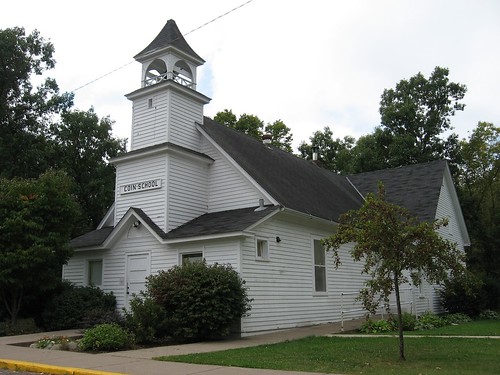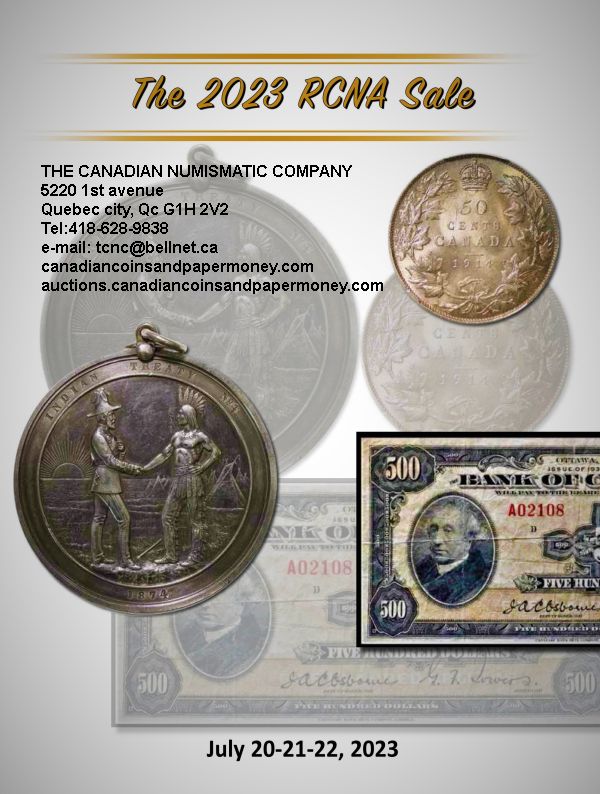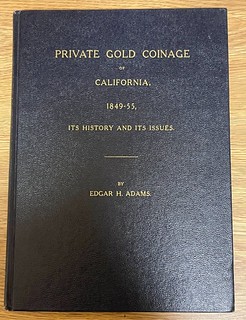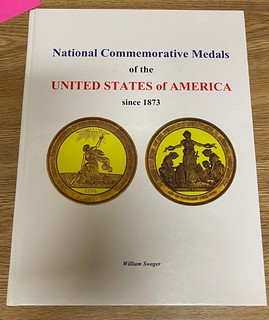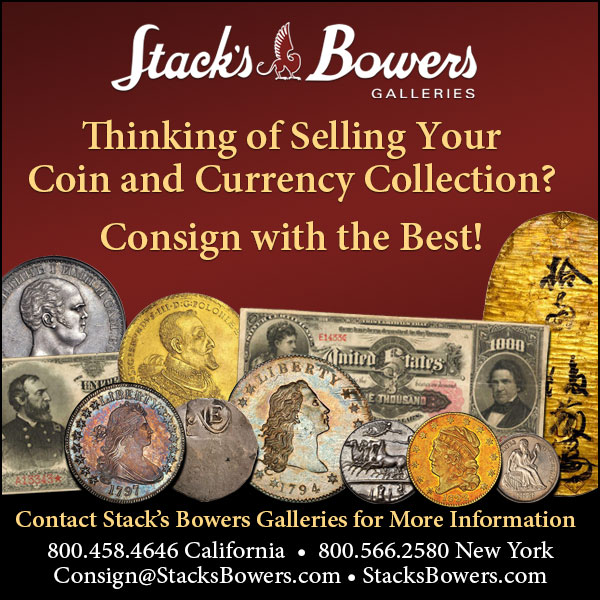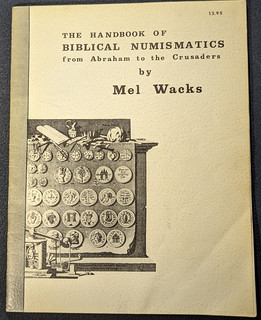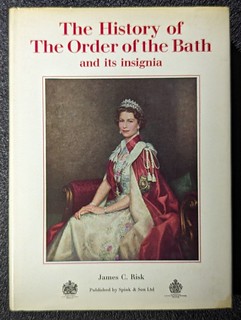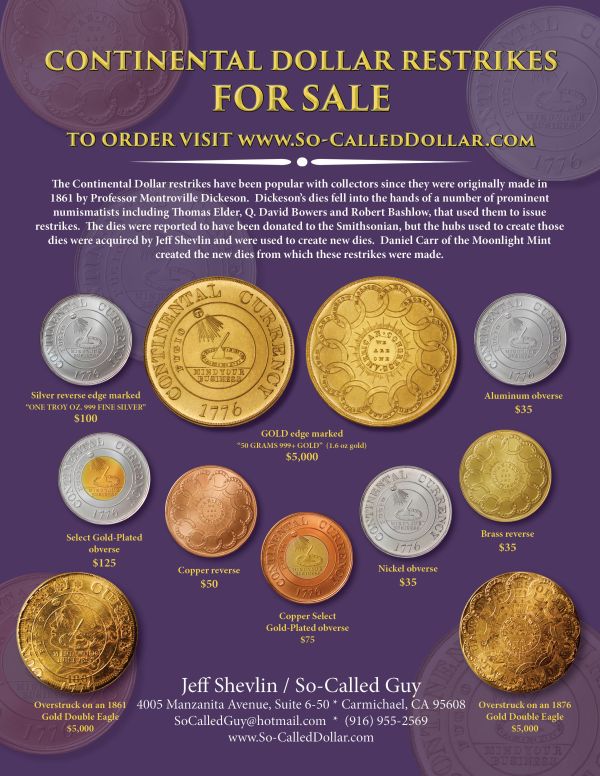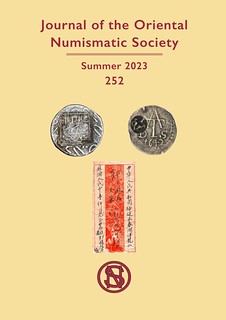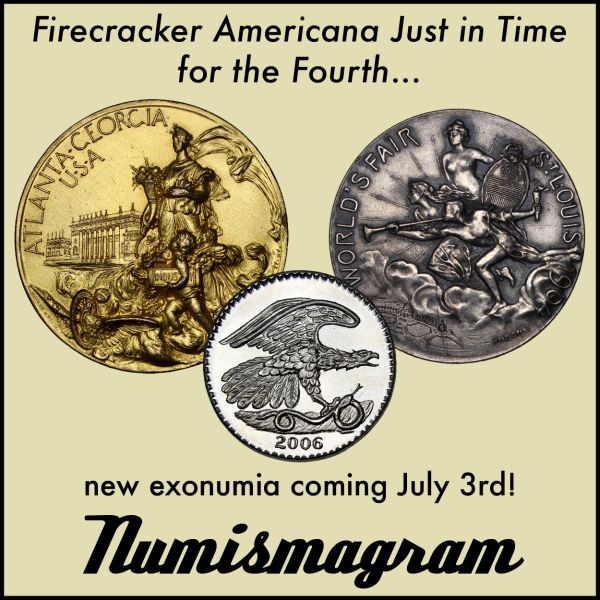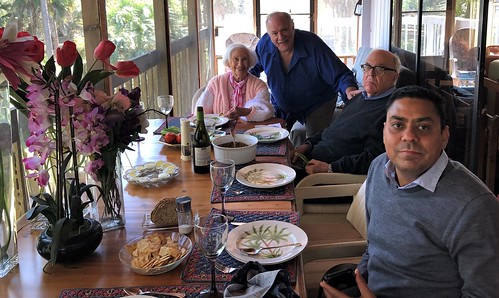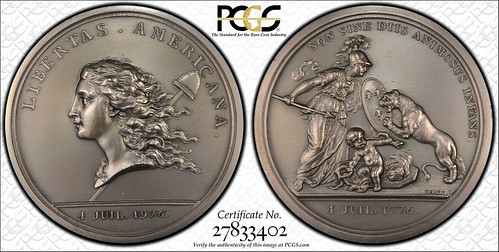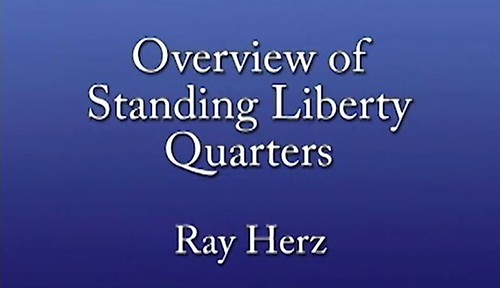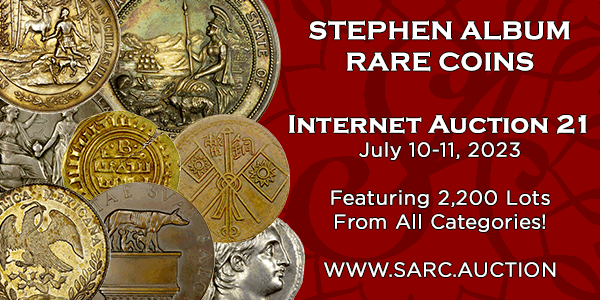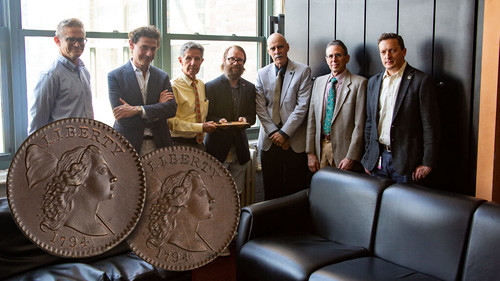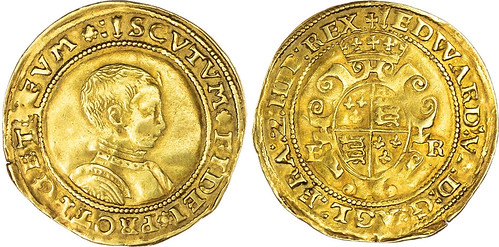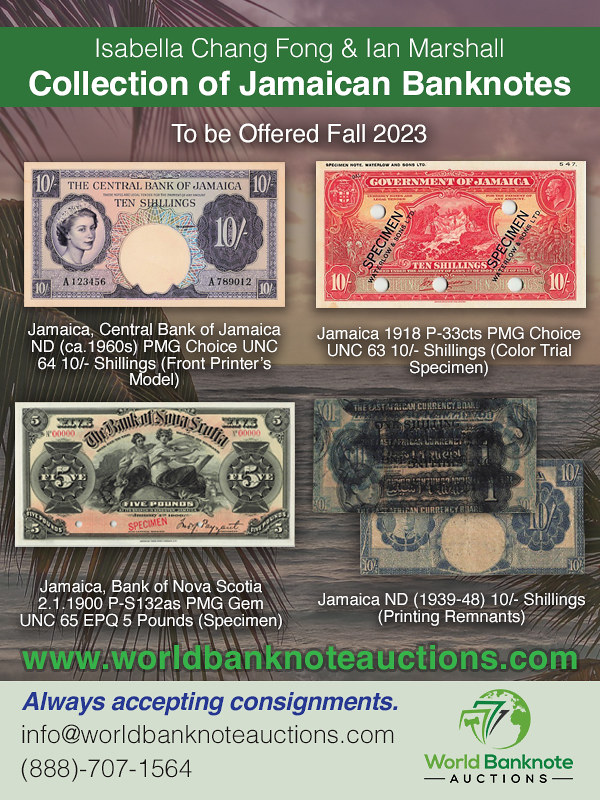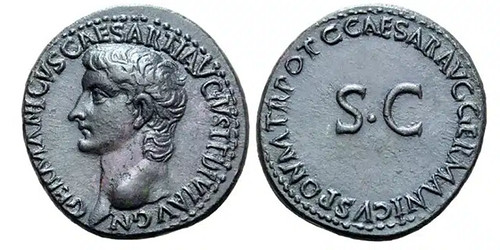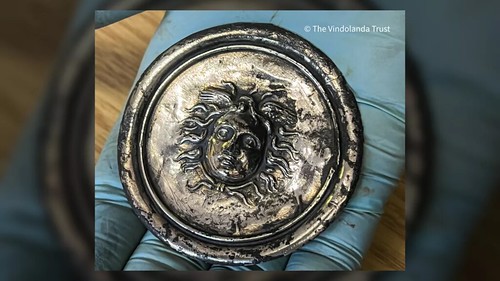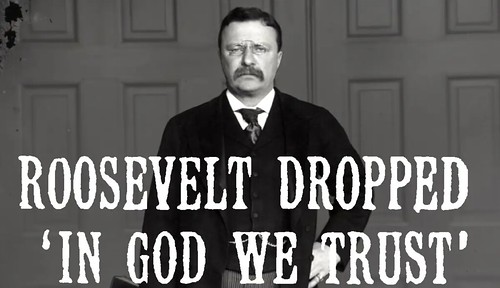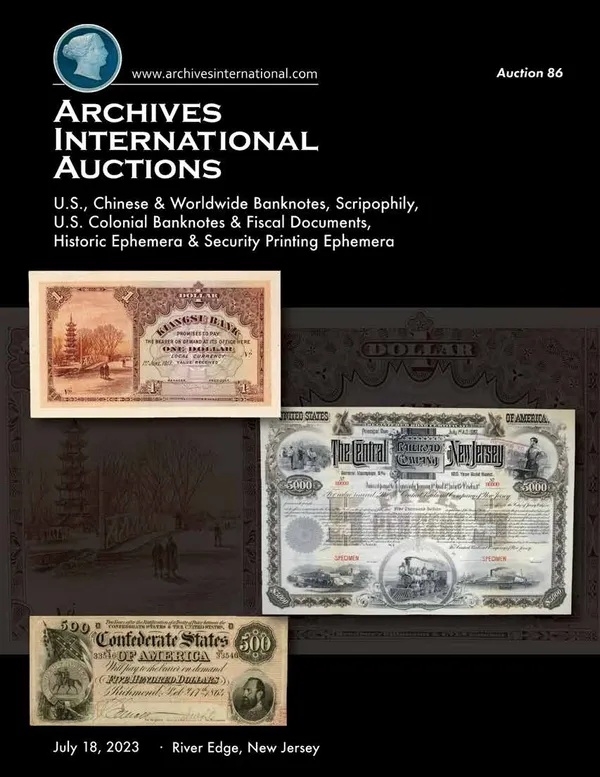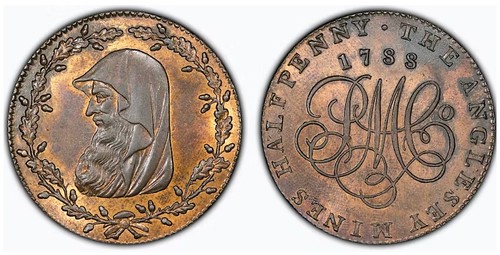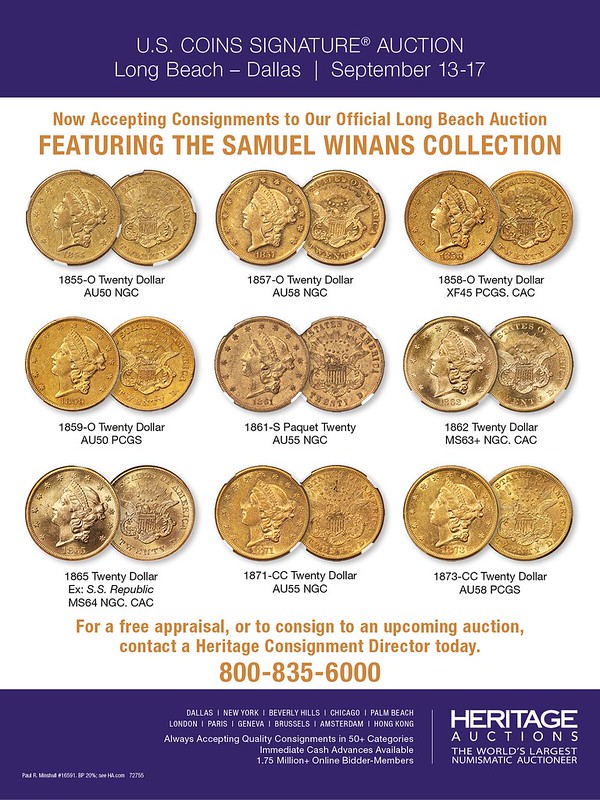
Visit our NBS Sponsors




About UsThe Numismatic Bibliomania Society is a non-profit association devoted to the study and enjoyment of numismatic literature. For more information please see our web site at coinbooks.org SubscriptionsThose wishing to become new E-Sylum subscribers (or wishing to Unsubscribe) can go to the following web page link MembershipThere is a membership application available on the web site Membership Application To join, print the application and return it with your check to the address printed on the application. Print/Digital membership is $40 to addresses in the U.S., and $60 elsewhere. A digital-only membership is available for $25. For those without web access, write to: Charles Heck, Treasurer AsylumFor Asylum mailing address changes and other membership questions, contact Chuck at this email address: treasurer@coinbooks.org SubmissionsTo submit items for publication in The E-Sylum, write to the Editor at this address: whomren@gmail.com BUY THE BOOK BEFORE THE COINSale Calendar |
- WAYNE'S WORDS: THE E-SYLUM JULY 2, 2023
- NBS BOOKBINDING DEMO: AWL
- ANA RAFFLE: AUTOGRAPHED CHERRYPICKERS' GUIDES
- SAMMUT NUMISMATIC LITERATURE JULY 2023
- WORKMAN'S NUMISMATIC LITERATURE JULY 2, 2023
- NEW BOOK: ANDREA FULVIO'S ILLUSTRIUM IMAGINES
- NEW BOOK: LAKSHMI, BEARER OF RICHES
- ORIENTAL NUMISMATIC SOCIETY SUMMER 2023
- THE MEDAL SPRING 2023
- ANS LIBRARY ACQUIRES CLAPP FAMILY INVENTORY
- RNS AWARDS 2022 LHOTKA MEMORIAL PRIZE
- HUGO JAN VAN REIJEN (1938-2023)
- NNP: THE 1976 LIBERTAS AMERICANA RESTRIKE
- VIDEO: STANDING LIBERTY QUARTERS
- PITTSBURGH ANTI-COUNTERFEITING SEMINAR
- CHRISTIANSEN AND STONE, AND OTHER WOMEN DEALERS
- NOTES FROM E-SYLUM READERS: JULY 2, 2023
- THE FIRST CAC SLAB OFF THE PRESS
- VOCABULARY TERM: NARRATIVE RELIEF
- THE COIN SCHOOL
- 1794 CLAPP LARGE CENT RETURNED TO ANS
- STEPHEN ALBUM INTERNET AUCTION 21
- NUMISMATIC NUGGETS: JULY 2, 2023
- DISAPPOINTING HEIRS OF GREAT RULERS
- ROMAN MILITARY MEDUSA MEDAL FOUND
- ON THE
IN GOD WE TRUST
MOTTO - WELSH MINING TOKENS AS PROTO-CRYPTO
- TONOPAH TOWN FOUNDER (AND HIS DONKEY)
- AUSTRALIA'S EARLIEST GOVERNMENT NOTES
- LOOSE CHANGE: JULY 2, 2023
- THE WORLD'S GREATEST ART THIEF
- THE RISE AND FUTURE OF BOX BREAKS
Click here to read the thin version on the web
Click here to subscribe
Click here to access the complete archive
To comment or submit articles, reply to whomren@gmail.com
Content presented in The E-Sylum is not necessarily researched or independently fact-checked, and views expressed do not necessarily represent those of the Numismatic Bibliomania Society.
WAYNE'S WORDS: THE E-SYLUM JULY 2, 2023
 We now have 8,084 subscribers.
We now have 8,084 subscribers.
If you're wondering why it's been a while since we published subscriber numbers, we were working through a glitch that occurred some time ago while our provider was upgrading their server. During the switchover hundreds of email addresses got dropped. It took a while, but these have now been restored. If you're receiving this today after a long absence, that's why. Welcome back!
Thank you for reading The E-Sylum. If you enjoy it, please send me the email addresses of friends you think may enjoy it as well and I'll send them a subscription. Contact me at whomren@gmail.com anytime regarding your subscription, or questions, comments or suggestions about our content.
This week we open with ANA convention updates, new numismatic literature offerings, two new books, two periodical issues, updates from the ANS, RNS, the Newman Numismatic Portal, and more.
Other topics this week include Andrea Fulvio's Illustrium imagines, Standing Liberty Quarters, exonumia dealers Christiansen and Stone, the first CAC slab, narrative relief, auction previews, a Roman military Medusa medal, Australia's first government banknotes, and the future of box breaks.
To learn more about National Commemorative Medals, Wampum belts, military money, the Clapp Family Collection, the Lhotka Prize, the World's Most Overdue Library Book, the Coin School, the Henry Medal, the Golden State Mint, Paymaster's Bills, Police Fund Notes, and the luckiest Chuck E. Cheese coin, read on. Have a great week, everyone!
Wayne Homren
Editor, The E-Sylum
NBS BOOKBINDING DEMO: AWL
The Numismatic Bibliomania Society table at this summer's American Numismatic Association World's Fair of Money® will feature a special live bookbinding demonstration. Len Augsburger submitted this update. -Editor
Bookbinding at the ANA
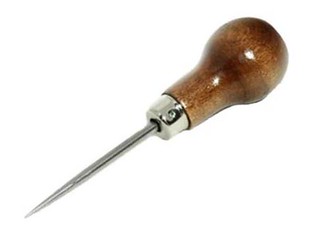 Our book binding term of the week is awl. Everyone knows what an awl is, but how is it used in book binding? After a signature is assembled and folded in half, the binder uses the awl to punch a line of holes, typically space about an inch apart, along the fold mark. These holes will then be used for sewing the signature itself and for sewing the signatures to each other. Illustrated here is the interior of a signature, with punched holes. Our bookbinding demo at the ANA will be on Wednesday, August 9, at the NBS table.
Our book binding term of the week is awl. Everyone knows what an awl is, but how is it used in book binding? After a signature is assembled and folded in half, the binder uses the awl to punch a line of holes, typically space about an inch apart, along the fold mark. These holes will then be used for sewing the signature itself and for sewing the signatures to each other. Illustrated here is the interior of a signature, with punched holes. Our bookbinding demo at the ANA will be on Wednesday, August 9, at the NBS table.
ANA RAFFLE: AUTOGRAPHED CHERRYPICKERS' GUIDES
Whitman Publishing has announced a numismatic literature giveaway at this summer's ANA show. -Editor
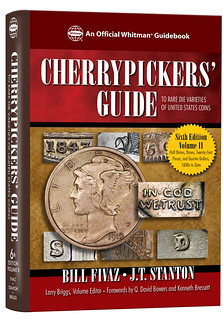 Whitman Publishing is launching the new sixth edition, volume II, of the Cherrypickers' Guide to Rare Die Varieties at the American Numismatic Association World's Fair of Money in Pittsburgh, August 8–12, 2023. A small quantity will be sold at the show, with a limit of one copy per customer. Ten copies will be raffled to lucky winners at the Whitman Publishing booth. After the show the new volume will be available from booksellers and retailers nationwide.
Whitman Publishing is launching the new sixth edition, volume II, of the Cherrypickers' Guide to Rare Die Varieties at the American Numismatic Association World's Fair of Money in Pittsburgh, August 8–12, 2023. A small quantity will be sold at the show, with a limit of one copy per customer. Ten copies will be raffled to lucky winners at the Whitman Publishing booth. After the show the new volume will be available from booksellers and retailers nationwide.
We know how frustrating it is to experience a sell-out when quantities are limited,
said Whitman Publishing's Dawn Burbank. We want to make sure every collector at the ANA show has an equal chance to win the new Cherrypickers' Guide if they're not able to buy one. We're reserving ten copies to raffle during the show, two per day, Tuesday through Saturday.
The raffled books are dated and individually numbered, with bookplates autographed by author Bill Fivaz.
SAMMUT NUMISMATIC LITERATURE JULY 2023
Kenny Sammut has added about 200 numismatic book listings on his eBay store. Here's a selection of current offerings. -Editor
Private Gold Coinage of California 1849-1855 by Edgar Adams
National Commemorative Medals of the United States of America by William Swoger
WORKMAN'S NUMISMATIC LITERATURE JULY 2, 2023
Alan Workman has also added new listings of numismatic literature. Here are some selections. -Editor
Wacks: The Handbook of Biblical Numismatics from Abraham to the Crusaders
James C. Risk: The History of the Order of Bath and its Insignia
NEW BOOK: ANDREA FULVIO'S ILLUSTRIUM IMAGINES
American Numismatic Society Francis D. Campbell Librarian David Hill alerted me to this new book on what is believed to be the first illustrated numismatic book, Andrea Fulvio's Illustrium imagines. Thank you! -Editor
Andrea Fulvio's Illustrium imagines and the Beginnings of Classical Archaeology
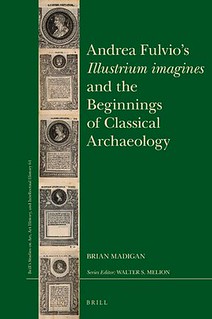 Series:
Brill's Studies on Art, Art History, and Intellectual History, Volume: 64
Series:
Brill's Studies on Art, Art History, and Intellectual History, Volume: 64
Author: Brian Madigan
Andrea Fulvio's Illustrium imagines and the Beginnings of Classical Archaeology is a study of the book recognized by contemporaries as the first attempt (1517) to publish artifacts from Classical Antiquity in the form of a chronology of portraits appearing on coins. By studying correspondences between the illustrated coins and genuine, ancient coins, Madigan parses Fulvio's methodology, showing how he attempted to exploit coins as historical documents. Situated within humanist literary and historical studies of ancient Rome, his numismatic project required visual artists closely to study and assimilate the conventions of ancient portraiture. The Illustrium imagines exemplifies the range and complexity of early modern responses to ancient artifacts.
NEW BOOK: LAKSHMI, BEARER OF RICHES
A new book has been published on the Indian Gold Coinage after the Tenth Century. -Editor
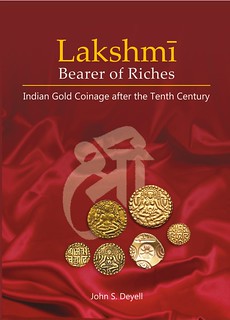 Lakshmi Bearer of Riches
Lakshmi Bearer of Riches
Indian Gold Coinage after the Tenth Century
by John Deyell
IIRNS Publications LLP, 2022. Hard cover, 330 pages, well illustrated. NEW Copy.
After an absence of several hundred years, die-struck gold coins began to re-appear in North India in the eleventh century, following the introduction of punch-marked gold in South India in the tenth. All these issues had one point of unity: the figure of goddess Lakshmi, seated on a lotus (in the north) or her name, ‘Sri' (in the south). They became the dominant gold coins of most Rajput kingdoms, even being adopted by the early Turkish invaders.
This book explores the production, circulation and function of these coins, probes the question of who really minted them, and explores their economic and cultural functions in early medieval society.
A must-have book for collectors and students, this is the first major update of the gold coin listings of Living Without Silver (1990). Retaining the original catalogue numbers, it expands them to accommodate many new discoveries.
ORIENTAL NUMISMATIC SOCIETY SUMMER 2023
The Summer 2023 issue of the Journal of the Oriental Numismatic Society has been published. Editor Dr. Paula Turner passed along this announcement. Thank you. -Editor
CONTENTS
Coins of Rustam Aq Qoyunlu countermarked in Varamin (Waramin)
Seyed Omid Mohammadi and Saeed Soleimani
Chinese influence in the former Dutch East Indies as evidenced by the use of cash-like coinage
T. D. Yih
The discovery of coins in Batu Bahara: The existence of Batu Bahara sultanate in 1745 AD?
Saparudin Barus
Qiaopi: a modern Chinese letter and remittance means of payment
Zhang Ruiqi
A find of coins and letters relating to H. W. Codrington
Barbara Mears
ONS news
Book review and notices
THE MEDAL SPRING 2023
Philip Attwood, editor of The Medal from the British Art Medal Society provided this information about the Spring 2023 issue. Thank you. -Editor
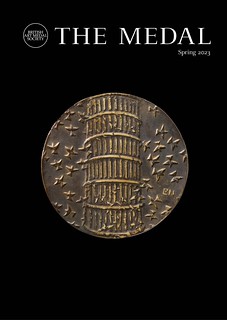 THIS ISSUE of The Medal draws attention to two specific medals and two
specific medallists. In doing so, it ranges from the seventeenth to the twenty-
first century.
THIS ISSUE of The Medal draws attention to two specific medals and two
specific medallists. In doing so, it ranges from the seventeenth to the twenty-
first century.
Dynastic marriages between princely houses are a recurring theme in European history, and many of them are recorded in medals. Rarely, however, can an alliance of this sort have been commemorated with a medal as intricate in its workmanship and rich in its symbolism as that devised by the German- born Sebastian Dadler for the marriage in 1642 of Prince William of Orange, the future stadtholder of the Netherlands, and Princess Mary, daughter of King Charles I of Great Britain. Using contemporary texts and Dutch prints, Gilman Parsons examines this medal in all its stunning complexity, his aim being to allow us to read the medal as it would have been understood at the time of its production.
A medal by one of France's greatest medallists, Eugène Oudiné, based on a painting by one of the country's greatest painters, Jean Auguste Dominique Ingres, is the subject of Tanya Szrajber's article. The painting, The Apotheosis of Napoleon I, no longer exists. Installed in the Hôtel de Ville, Paris's city hall, it was destroyed in 1871 during the tumultuous months of the Paris Commune. Accordingly, its appearance is known only through other works in various media in both two and three dimensions. Among these is Oudiné's medal, which itself exists in different forms. In her article Szrajber disentangles the available information to provide an account of how and when this medal came into being and thereby allowed Ingres's composition to live on in a form to which, as has previously been remarked, it was so admirable suited.
ANS LIBRARY ACQUIRES CLAPP FAMILY INVENTORY
In their July 2023 eNews, the ANS announced its acquisition -Editor
ANS Library Acquires Clapp Family Collection Inventory and Provenance Record
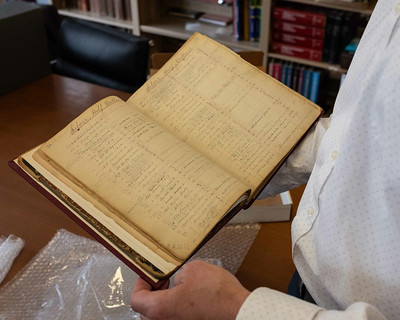 ?Thanks to a generous gift given towards its purchase by ANS member Eric Krauss, the ANS Library has acquired a unique archival document detailing a major collection of U.S. gold and regular issue coins.
?Thanks to a generous gift given towards its purchase by ANS member Eric Krauss, the ANS Library has acquired a unique archival document detailing a major collection of U.S. gold and regular issue coins.
This previously unavailable bound inventory is the only complete record of the coins of J. M. Clapp (1835-1906) and his son John Clapp (1880-1940), whose collection was acquired intact by Louis Eliasberg in 1942. We are thrilled to have the opportunity to fill a gap in the provenance record by preserving this inventory and making it available for study.
RNS AWARDS 2022 LHOTKA MEMORIAL PRIZE
In another announcement from the July 2023 ANS eNews, the winner of the 2022 Lhotka Memorial Prize has been announced by the Royal Numismatic Society. -Editor
Yarrow Book Wins Royal Numismatic Society's Lhotka Prize
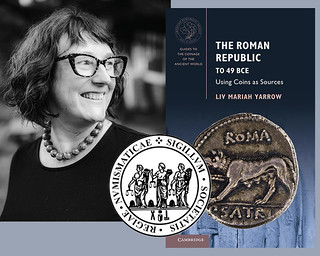 The Roman Republic to 49 BCE: Using Coins as Sources by Prof. Liv Mariah Yarrow, Chair of Classics at Brooklyn College, has been awarded the 2022 Lhotka Memorial Prize by the Royal Numismatic Society. It is awarded to the author of the book or article in English considered most helpful to the elementary student of numismatics and published in the previous two calendar years. Yarrow's book is part of the Guides to the Coinage of the Ancient World series co-published by the ANS and Cambridge University Press with the purpose of integrating numismatic evidence—especially high-definition photos—into course materials communicating the history and archaeology of the ancient Mediterranean world.
The Roman Republic to 49 BCE: Using Coins as Sources by Prof. Liv Mariah Yarrow, Chair of Classics at Brooklyn College, has been awarded the 2022 Lhotka Memorial Prize by the Royal Numismatic Society. It is awarded to the author of the book or article in English considered most helpful to the elementary student of numismatics and published in the previous two calendar years. Yarrow's book is part of the Guides to the Coinage of the Ancient World series co-published by the ANS and Cambridge University Press with the purpose of integrating numismatic evidence—especially high-definition photos—into course materials communicating the history and archaeology of the ancient Mediterranean world.
HUGO JAN VAN REIJEN (1938-2023)
E-Sylum advertiser Steve submitted this note on the passing of Hugo Jan van Reijen. Thank you. -Editor
From right to left: Binod (Hugo's frequent travel companion, business director), Hugo van Reijen, me (Steve) & my Mom
Drs. Hugo Jan van Reijen, October 10, 1938 to June 27, 2023
When I was still dabbling in stamps, Hugo was the philatelic agent for many of the Dutch countries. Thirty years ago I went from retail numismatics to wholesale, and as he was buying up the contents of national banks, in Africa and around the world, Hugo was a great source.
NNP: THE 1976 LIBERTAS AMERICANA RESTRIKE
Newman Numismatic Portal Project Coordinator Len Augsburger provided the following report on the 1976 Libertas Americana medal restrike. -Editor
The 1976 Libertas Americana Restrike
The Libertas Americana medal is perhaps the most celebrated in the American series and is placed first in Whitman's 100 Greatest American Tokens and Medals. Although not approaching the number of restrikes of the Washington Before Boston medal, the Libertas has seen its share of copies. The most prominent among these was accomplished by the Paris Mint, in conjunction with First Coinvestors, Inc. in 1975. The massive 3 silver planchet, 0.925 fine, weighed 8.04 troy ounces and required at least six strikes to fully render the detail. Louis Sass, in the July 1990 Numismatist, noted a production of five trial strikes in copper, 500 pieces in silver (marketed at $250 each), and three examples in gold.
VIDEO: STANDING LIBERTY QUARTERS
The David Lisot Video Library on the Newman Numismatic Portal can be found at:
https://nnp.wustl.edu/library/multimediadetail/522852
We highlight one of his videos each week in The E-Sylum. Here's one from 2007 with Ray Herz speaking about Standing Liberty Quarters. -Editor
PITTSBURGH ANTI-COUNTERFEITING SEMINAR
This press release describes the upcoming anti-counterfeiting seminar for law enforcement officials at the Pittsburgh ANA show. -Editor
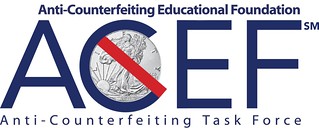 To address the mass proliferation of
counterfeits plaguing the U.S. marketplace, the Anti-Counterfeiting Educational
Foundation (www.ACEFonline.org) in partnership with the U.S. Treasury Department
and in cooperation with the American Numismatic Association will sponsor an
accredited seminar for local, county, state, and federal law enforcement agencies.
To address the mass proliferation of
counterfeits plaguing the U.S. marketplace, the Anti-Counterfeiting Educational
Foundation (www.ACEFonline.org) in partnership with the U.S. Treasury Department
and in cooperation with the American Numismatic Association will sponsor an
accredited seminar for local, county, state, and federal law enforcement agencies.
Entitled, Counterfeit Coins, Precious Metals, Numismatic and Financial Crime
Investigations,
the eight-hour seminar will be conducted on Thursday, August 10,
during the ANA 2023 Pittsburgh World's Fair of Money® in the David L. Lawrence
Convention Center. Instructors for the seminar will be former Texas Police Chief Doug
Davis, Director of the ACEF Anti-Counterfeiting Task Force, and Chris Hersey, Senior
Special Agent in the Treasury Department's Office of the Inspector General.
CHRISTIANSEN AND STONE, AND OTHER WOMEN DEALERS
Phil Iversen writes:
"Regarding the articles on women in numismatics there were two ladies active on the California scene, Alva Christensen and Ethel Stone, doing business under the name Christensen and Stone, setting up at shows and having a number of mail bid sales over many years. "
THE BOOK BAZARRE
NOTES FROM E-SYLUM READERS: JULY 2, 2023
More on Larry Casey
E-Sylum advertiser Steve writes:
"Larry Casey was a great buddy and could be found at our office for days on end. He'd often help out at shows, and on weekends he'd hang out at the house, doing the odd construction/repair job or just talking notes or doing nothing on the lanai.
He was sweet and gentle, and I only saw him lose it once (mea culpa). Our condolences to his nephew, whom he often spoke about, also his sister and brother-in-law. He had a glimmer in his eyes and a voice that was un-mistakenly, Larry Casey."
To read the earlier E-Sylum article, see:
PASSINGS: ERWIN SCHäFFER, LARRY CASEY
(https://www.coinbooks.org/v26/esylum_v26n26a13.html)
Other topics this week include the General Anthony Wayne Gold Medal, and the World's Most Overdue Library Book. -Editor
THE FIRST CAC SLAB OFF THE PRESS
John Feigenbaum of CDN Publishing recently visited the new CAC grading facility in Virginia Beach to report on the first official coin being slabbed there. With permission, we're republishing his Greysheet blog article here. -Editor
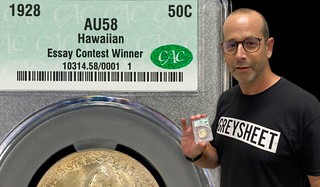 Earlier this week I had the exclusive opportunity to witness the first official CAC slab being sealed and released for public viewing. A major thunderstorm was pounding outside but the real lightning was happening in the new CAC grading facility. Ours was the only news outlet available to attend this momentous event and I expect this moment will be an historic one in the history of numismatics, not to mention a seminal moment in the growth phase of the CAC company itself.
Earlier this week I had the exclusive opportunity to witness the first official CAC slab being sealed and released for public viewing. A major thunderstorm was pounding outside but the real lightning was happening in the new CAC grading facility. Ours was the only news outlet available to attend this momentous event and I expect this moment will be an historic one in the history of numismatics, not to mention a seminal moment in the growth phase of the CAC company itself.
In slabbing its first coin in Virginia, CAC has effectively relocated its headquarters from Far Hills, NJ to Virginia Beach. The founder and president, John Albanese, personally plans to remain in New Jersey but will make a regular commute to his new southern HQ. The existing business of stickering of PCGS and NGC coins will still happen in New Jersey for an indefinite time.
VOCABULARY TERM: NARRATIVE RELIEF
Here's another entry from Dick Johnson's Encyclopedia of Coin and Medal Terminology. -Editor
Narrative Relief. The use of multiple figures and scenes of events in continuous sequence. Narrative relief, also called continuous relief, is much like a comic strip without panes. In medallic form narrative relief is called a register which employs multiple ground lines with the multiple designs crossing over a ground line or two.
THE COIN SCHOOL
E-Sylum Feature Writer and American Numismatic Biographies author Pete Smith submitted this question about The Coin School. -Editor
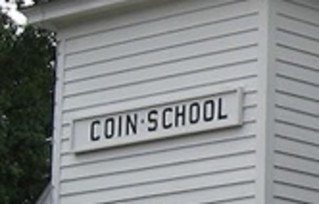 Most readers of The E-Sylum should be familiar with the American Numismatic Association
Summer Seminar. It recently concluded after running during the weeks of June 17-22 and June
24-29. Some people who attend refer to it as
Most readers of The E-Sylum should be familiar with the American Numismatic Association
Summer Seminar. It recently concluded after running during the weeks of June 17-22 and June
24-29. Some people who attend refer to it as Coin Camp.
Are any readers familiar with the Coin School? A photo shows the name Coin School on the bell tower above the door.
1794 CLAPP LARGE CENT RETURNED TO ANS
NBS Treasurer Chuck Heck is the author of Die States of 1794 United States Large Cents, and he recently helped repatriate a missing Clapp Collection Large Cent to the ANS. Nice work! -Editor
A 1794 (S-24) U.S. large cent has been returned to the American Numismatic Society (ANS) by the Husak family after they realized that the coin in the family's Liberty Cap Foundation Collection had been stolen from the ANS decades ago. The coin was originally part of the George H. Clapp Collection of U.S. large cents, one of the greatest of such collections ever created, which was donated to the American Numismatic Society in 1946.
STEPHEN ALBUM INTERNET AUCTION 21
Here's the announcement for the July 2023 internet auction from Stephen Album Rare Coins. -Editor
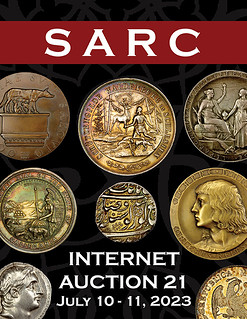 Stephen Album Rare Coins will hold its Internet Auction 21 on July 10-11, 2023. The auction is
made up of exactly 2200 lots of Ancient, Islamic, Indian, Chinese, and World Coins.
Stephen Album Rare Coins will hold its Internet Auction 21 on July 10-11, 2023. The auction is
made up of exactly 2200 lots of Ancient, Islamic, Indian, Chinese, and World Coins.
The sale includes additional items from collections that were consigned to the firm's May 2023 Auction 46. Notable sections of interest include The Butalia Collection of Sikh Empire Coins (Part 2), some single lots and group lots of Ottoman countermarked coins from the Hans Wilski Collection, as well as a varied assortment of medieval Islamic gold coins. One additional internet auction will take place in August before the firm offers up its next premier auction in September.
Some highlights from the July sale follow:
NUMISMATIC NUGGETS: JULY 2, 2023
Here's a selection of interesting or unusual items I came across in the marketplace this week. Tell us what you think of some of these. -Editor
1549 Edward VI Half-sovereign
Edward VI (1547-53), Second period, January 1549 – April 1550, Half-sovereign, Tower mint, mintmark arrow (1549), uncrowned bust right, rosette stops, legend surrounds, SCVTUM FIDEI PROTEGET EVM. Rev, crowned quartered garnished shield of arms, E and R flanking either side all within inner linear beaded circle. Legend reads EDWARD VI DG AGL FRA Z HIB REX, 5.32 (S.2435; N.1908; Schneider 670 variation with rev stops). Light reddish toning complimenting the intrinsic Gold, an underlying mint bloom also visible. Portrait pleasing, with clear fields both sides. Good very fine, rare.
From the Baldwin's upcoming auction. -Editor
To read the complete lot description, see:
Edward VI (1547-53), Second period, January 1549 – April 1550, Half-sovereign, Tower mint, mintmark arrow (1549), uncrowned
(https://thestrand.com/auctions/calendar/list#/lots/db133e45-ed71-4b3a-a065-07ead807c2f2)
Other topics this week include the Henry Medal, and the Golden State Mint -Editor
DISAPPOINTING HEIRS OF GREAT RULERS
A CoinWeek Ancient Coin Series by Mike Markowitz looks at the coins of "great and wise rulers who fathered heirs who were monsters or idiots." Interesting topic! Here's an excerpt - see the complete article online for more. -Editor
HISTORY IS LITTERED with great and wise rulers who fathered heirs who were monsters or idiots: sons who just plain turned out wrong. The coins of these rulers illustrate these stories, perhaps offering us some insight into how such good fathers raised such bad sons.
Germanicus and Caligula
ROMAN MILITARY MEDUSA MEDAL FOUND
Ed Hohertz passed along this article about the find of an interesting silver Roman military medal picturing Medusa. Thanks. -Editor
A nearly 1,800-year-old silver military medal featuring the snake-covered head of Medusa has been unearthed in what was once the northern edge of the Roman Empire.
Excavators discovered the winged gorgon on June 6 at the English archaeological site of Vindolanda, a Roman auxiliary fort that was built in the late first century, a few decades before Hadrian's Wall was constructed in A.D. 122 to defend the empire against the Picts and the Scots.
THE BOOK BAZARRE
ON THE IN GOD WE TRUST
MOTTO
The Collector is a website with "Daily Articles on Ancient History, Philosophy, Art & Artists by Leading Authors
Trusted by Scholars, Classrooms & Enthusiasts." A recent article summarizes the history of the motto In God We Trust
on coinage.
Here's an excerpt - see the complete article online.
-Editor
Inscriptions referencing the American belief in God began to appear on US coinage as early as colonial times. The foundation of the nation was ultimately built on the belief in God, as most of the first English to permanently settle in North America were Puritans, Anglicans, and Quakers, among other Christian denominations. When President Theodore Roosevelt was elected into office in 1904, he decided to remove the inscription In God We Trust
from American coinage. He thought that putting this motto on the coins was atrocious. Roosevelt received a great deal of backlash for his rejection of the nation's motto on coinage, which led to new legislation requiring the motto to be inscribed on certain coins.
WELSH MINING TOKENS AS PROTO-CRYPTO
Ths article frames 18th century British tokens as forerunners of cryptocurrency. -Editor
[W]hile cryptocurrencies get a lot of attention today, in some ways they are not a revolutionary concept. Hundreds of years ago, workers in Wales were often paid with alternative currencies instead of money.
These currencies were physical tokens that represented and were linked to the value of real money. Many cryptocurrencies work in a similar way, acting as digital tokens that represent a ledger of financial assets (this is known as tokenisation
).
Digital currencies are also not reliant on any central authority, such as a government or bank, to uphold or maintain their network of exchange. Again, this is similar to how physical tokens were used by Welsh mining companies.
TONOPAH TOWN FOUNDER (AND HIS DONKEY)
For those interested in precious metals and mining history, here's an article about the Nevada mining town of Tonopah and a silver piece commemorating its founding. -Editor
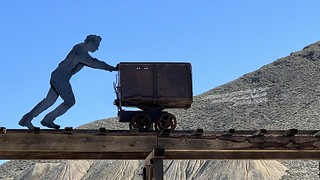 Nevada's biggest silver deposits were discovered well over a century ago: the Comstock Lode, discovered around 1860 and then the Tonopah District discovery of the 1900s.
Nevada's biggest silver deposits were discovered well over a century ago: the Comstock Lode, discovered around 1860 and then the Tonopah District discovery of the 1900s.
Nevada became a state as a result of the Comstock – the silver paid for the Civil War and the winning of the Union,
said Bill Howard, executive chairman of Blackrock Silver during a June site visit. It's often said that if Comstock made Nevada, the Tonopah silver deposits were what paid for keeping Nevada a state. That's why we're called the ‘Silver State.'
AUSTRALIA'S EARLIEST GOVERNMENT NOTES
Andrew Crellin of Sterling & Currency published a recent blog article on Australia's earliest government-issued notes. With permission, here's an excerpt - see the complete article online. NOTE: NSW is New South Wales. -Editor
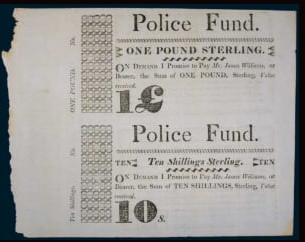 Over the years I've seen several of the notes issued by the NSW Colonial Police Fund - judging by the prices they realised at auction, I could see they were rare and highly prized, but I never really appreciated their importance until recently.
Over the years I've seen several of the notes issued by the NSW Colonial Police Fund - judging by the prices they realised at auction, I could see they were rare and highly prized, but I never really appreciated their importance until recently.
These notes are so early in Australia's settled history that very little has been written about them. They fall outside the scope of our standard guides to Australian coins and notes, yet they were essential to the foundation of our national economy. They are so important, they should be understood and acknowledged for what they are - the first official banknotes to be used on our continent.
The question I had about the NSW Colonial Police Fund notes was - are these the earliest known notes issued by a government body on Australia's shores? If they weren't, what was?
LOOSE CHANGE: JULY 2, 2023
Here are some additional items in the media this week that may be of interest. -Editor
Last week Alan Weinberg made the case for every collector learning to grade for themselves rather than relying only on the opinions of third-party graders. Here's a Numismatic News article by Mike Thorne on "Why You Should Learn to Grade for Yourself". -Editor
In the history of the numismatic market, one of the main topics has always been coin grading. Defined as a label to describe the condition of the coin, a coin's grade is inseparably intertwined with its value. Coins of the same rarity with lower grades are worth less than coins that qualify for higher grades.
Although it's hard to believe, back before the beginning of the major grading services (ANACS, NGC, PCGS), coins at a coin show were typically found in 2x2 holders or 2x2 brown paper envelopes with the dealer's grade plainly marked on the holder. This was a grade that used adjectives to describe it such as Very Good or Very Fine or Gem Uncirculated. Sometimes pluses were added if the dealer thought the coin was particularly nice for the grade.
Some dealers applied grades that could best be described as optimistic. That is, the coin in reality might be a grade or two (or more) below the grade indicated on the holder. In addition, many coins had serious problems (cleaning, damage, whizzing) not described on the holder.
But how do you go about learning to grade? Cited in the ANA's Grading Standards for United States Coins, Ken Bressett of Red Book (Guide Book of United States Coins) fame listed four things needed to learn how to grade coins: (1) a good magnifying glass, (2) a good light, (3) a good memory, and (4) 20 years of experience. In other words, you're not going to teach yourself how to be an accurate grader overnight. You're going to have to look at coins in different grades, study and remember their characteristics, and read all you can about the grading process.
To read the complete article, see:
Why You Should Learn to Grade for Yourself
(https://www.numismaticnews.net/collecting-101/why-you-should-learn-to-grade-for-yourself)
To read the earlier E-Sylum article, see:
NOTES FROM E-SYLUM READERS: JUNE 25, 2023 : How to Learn to Grade Coins
(https://www.coinbooks.org/v26/esylum_v26n26a10.html)
Other topics this week include Prigozhin's Rubles, the Post-Piggy Bank World, and Dame Shirley Bassey's new coin. -Editor
THE WORLD'S GREATEST ART THIEF
While not numismatic, this GQ story of a brazen art thief is every museum's worst nightmare. And instead of being called an art thief, Breitwieser prefers to be thought of as an art collector with an unorthodox acquisition style. -Editor
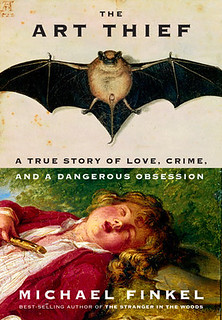 Among the many mysteries that the author Michael Finkel hoped to untangle when he first began interviewing the world's most prolific art thief was the matter of logistics. How did Stéphane Breitwieser do it? How did he manage to slip more than 300 works of art out of museums and cathedrals all across Europe, amassing a secret collection worth as much as $2 billion? And how did he do it all during daylight hours, as museum-goers and security guards often mingled nearby?
Among the many mysteries that the author Michael Finkel hoped to untangle when he first began interviewing the world's most prolific art thief was the matter of logistics. How did Stéphane Breitwieser do it? How did he manage to slip more than 300 works of art out of museums and cathedrals all across Europe, amassing a secret collection worth as much as $2 billion? And how did he do it all during daylight hours, as museum-goers and security guards often mingled nearby?
Finkel first introduced GQ readers to Breitwieser in 2019, in his story The Secrets of the World's Greatest Art Thief. Since then, Breitwieser was arrested for stealing art once more, and when he faced trial earlier this year, Finkel was in the courtroom. Now, as his new book arrives—a full 11 years after he first began pursuing the story—Finkel discusses how he reported it, why Breitwieser is so unique among criminals, and what it feels like to visit a museum with one of history's most spectacular art thieves in tow.
THE RISE AND FUTURE OF BOX BREAKS
Earlier this year we discussed the "box break" gambling angle in numismatics: "a new and exciting way to collect coins.... VaultBox was inspired by the thrill of opening sports and trading card packs, and the excitement of chasing the biggest hits." This ESPN article explores "the controversial rise and uncertain future of box breaks" in the sports card realm. -Editor
On that day in 2019, box breaking was still in its toddler stages as the biggest accelerant on what has become a booming, roller-coaster, billion-dollar sports card business. At that time, box breaking was nibbling at the corners of the hobby. Four years later -- at least partially because of what is about to happen in that room with Rich Layton -- box breaking has swallowed up the hobby whole. It's such a big business that using the word "hobby" at all anymore feels a little silly.


